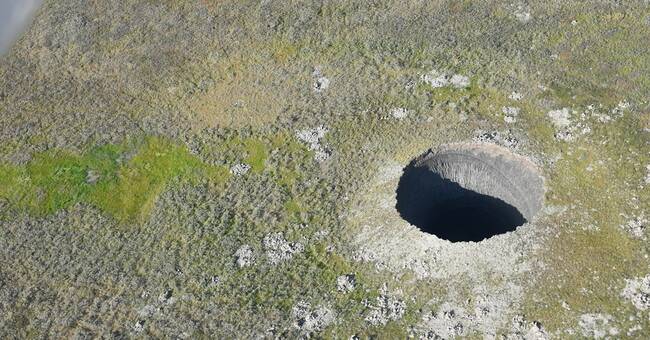Everything from asteroid impacts, collapsed old war bunkers and UFOs have been suggested to lie behind the mysterious holes observed in recent years on the Russian tundra in Siberia.
The discoveries are made randomly during helicopter flights and by reindeer herders moving in the landscape.
It is very possible that there are more.
- We only have fragmented evidence from the local population who claim to have heard sounds and seen smoke and flames.
After one or two years, the craters are filled with water, which makes them more difficult to distinguish from other lakes, says Evgeny Chuvilin, a researcher at Skoltech in Moscow, and one of the few who have studied the craters up close.
Methane gas heated
The Russian tundra covers two thirds of Russia so the craters make up only a small fraction of the surface.
But the explosions raise the question of how the enormous amounts of methane gas lying frozen in the Arctic tundra will behave as temperatures rise.
One hypothesis is that it may be a type of ice volcano, also called a cryovolcano, that is behind it.
This type of explosion, which carries large amounts of ice and snow, is often driven by methane gas which heats up and thus expands, a phenomenon that has been observed on other planets, but rarely here on earth.
- When methane expands and explosively shoots upwards, it affects frozen soils with a lot of ice in them, so it certainly sprays up some ice cubes.
An ice-volcanic eruption can be said.
That description is not so far-fetched, says Örjan Gustafsson, professor of biogeochemistry at Stockholm University.
Climate change may be behind it
Researchers believe that climate change and hot summers may be behind a more frequent frequency of explosions.
- Climate change could be behind an increase in cryovolcanism in Siberia, but this needs to be studied more carefully, says Evgeny Chuvilin.
At the end of September, a Swedish-Russian expedition involving researcher Örjan Gustafsson will, among other things, investigate the same crater phenomenon on the seabed along the Siberian coast.
The research on the craters in Siberia is published in Geosciences.

